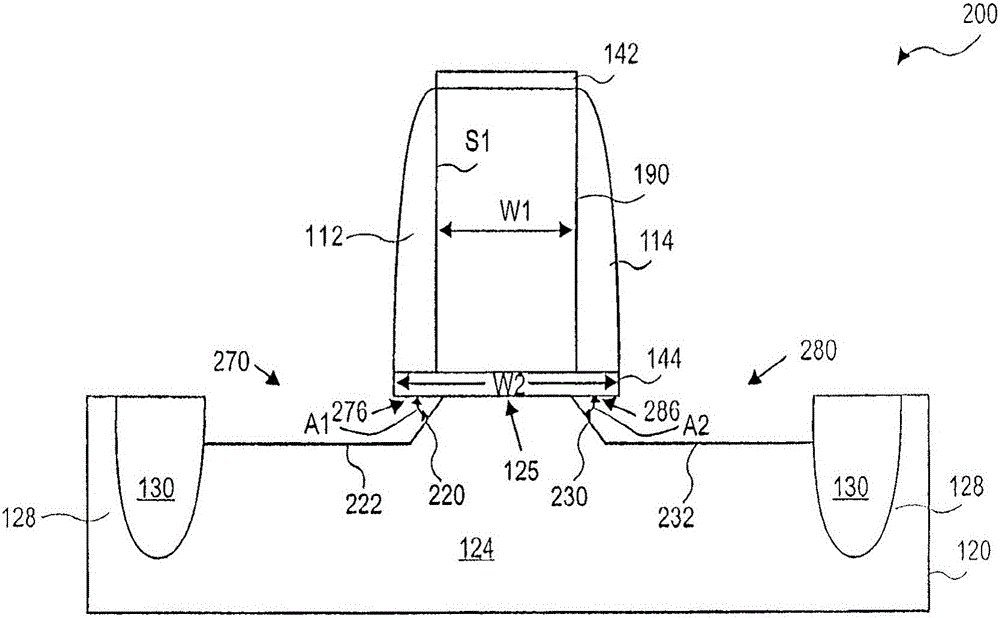CMOS Transistor Junction Regions Formed By A CVD Etching And Deposition Sequence
A junction and crystalline technology, used in semiconductor devices, semiconductor/solid-state device manufacturing, electrical components, etc., can solve problems such as large diffusion resistance and insufficient optimization of diffusion resistance.
- Summary
- Abstract
- Description
- Claims
- Application Information
AI Technical Summary
Problems solved by technology
Method used
Image
Examples
Embodiment Construction
[0024] Locally strained transistor channel regions can be accomplished by forming source-drain regions in the channel region of a MOS transistor by selective epitaxy of a strain-generating material. Such a process flow may include etching substrate material in a source-drain region of a transistor in one process operation with an etch reactor. Subsequent operations may include replacing the removed material with Si alloy material in the deposition reactor. The etch reactor and the deposition reactor may be physically distinct and separate. Thus, before starting the Si alloy deposition process, the substrate must be removed from the etch reactor and exposed to atmospheric pressure. The above Si alloy can be pure Si or Si 1-x Ge x or Si 1-x C x , and can be undoped or doped with P-type or N-type dopants. The deposition process described above may be selective or non-selective. According to the examples presented herein, the etch reactor and the deposition reactor may be p...
PUM
 Login to View More
Login to View More Abstract
Description
Claims
Application Information
 Login to View More
Login to View More - R&D
- Intellectual Property
- Life Sciences
- Materials
- Tech Scout
- Unparalleled Data Quality
- Higher Quality Content
- 60% Fewer Hallucinations
Browse by: Latest US Patents, China's latest patents, Technical Efficacy Thesaurus, Application Domain, Technology Topic, Popular Technical Reports.
© 2025 PatSnap. All rights reserved.Legal|Privacy policy|Modern Slavery Act Transparency Statement|Sitemap|About US| Contact US: help@patsnap.com



